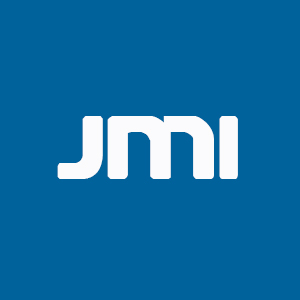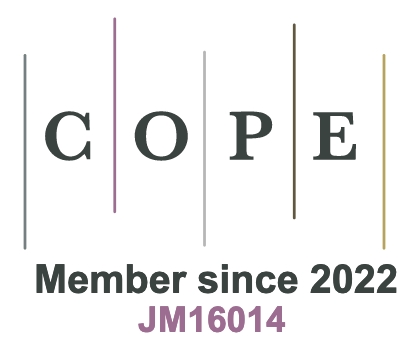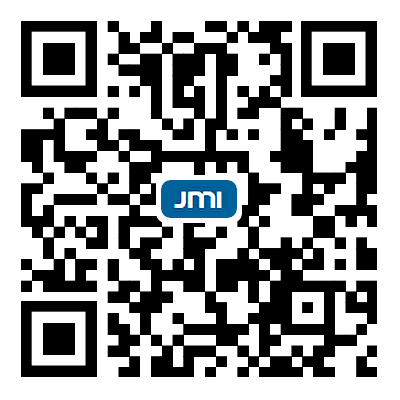REFERENCES
1. Tan, L.; Yang, X.; Shi, D.; Huang, W.; Lyu, S.; Fan, Y. Effect of microstructure rafting on deformation behaviour and crack mechanism during high-temperature low-cycle fatigue of a Ni-based single crystal superalloy. Int. J. Fatigue. 2025, 190, 108619.
3. Ge, M.; Li, Y.; Wang, X.; et al. Effects of Ta on the high temperature creep behavior and deformation mechanism of a Ni-based single crystal superalloy. Mater. Sci. Eng. A. 2024, 916, 147335.
4. Ru, Y.; Zhang, H.; Pei, Y.; et al. Improved 1200 °C stress rupture property of single crystal superalloys by γ’-forming elements addition. Scr. Mater. 2018, 147, 21-6.
5. Xia, W.; Zhao, X.; Yue, L.; Zhang, Z. Microstructural evolution and creep mechanisms in Ni-based single crystal superalloys: a review. J. Alloys. Compd. 2020, 819, 152954.
6. Zhang, P.; Yuan, Y.; Niu, Q.; et al. Correlation microstructural evolution with creep-rupture properties of a novel directionally solidified Ni-based superalloy M4706. J. Mater. Sci. 2022, 57, 17812-27.
7. Murakumo, T.; Kobayashi, T.; Koizumi, Y.; Harada, H. Creep behaviour of Ni-base single-crystal superalloys with various γ’ volume fraction. Acta. Mater. 2004, 52, 3737-44.
8. Liu, Y.; Niu, C.; Wang, Z.; et al. Machine learning in materials genome initiative: a review. J. Mater. Sci. Technol. 2020, 57, 113-22.
9. Liu, P.; Huang, H.; Antonov, S.; et al. Machine learning assisted design of γ’-strengthened Co-base superalloys with multi-performance optimization. npj. Comput. Mater. 2020, 6, 334.
10. Zhao, Y. Understanding and design of metallic alloys guided by phase-field simulations. npj. Comput. Mater. 2023, 9, 1038.
11. Oommen, V.; Shukla, K.; Goswami, S.; Dingreville, R.; Karniadakis, G. E. Learning two-phase microstructure evolution using neural operators and autoencoder architectures. npj. Comput. Mater. 2022, 8, 876.
12. Yang, K.; Cao, Y.; Zhang, Y.; et al. Self-supervised learning and prediction of microstructure evolution with convolutional recurrent neural networks. Patterns 2021, 2, 100243.
13. Zhu, Y.; Xu, T.; Wei, Q.; et al. Linear-superelastic Ti-Nb nanocomposite alloys with ultralow modulus via high-throughput phase-field design and machine learning. npj. Comput. Mater. 2021, 7, 674.
14. Van Lich, L.; Nguyen, T.; Hong Hue, D. T.; et al. The design of compositionally modulated lead-free ferroelectrics with large electromechanical response via high-throughput phase-field simulations and machine learning. Mater. Res. Bull. 2023, 167, 112433.
15. Shen, Z. H.; Wang, J. J.; Jiang, J. Y.; et al. Phase-field modeling and machine learning of electric-thermal-mechanical breakdown of polymer-based dielectrics. Nat. Commun. 2019, 10, 1843.
16. Li, W.; Yang, T.; Liu, C.; et al. Optimizing piezoelectric nanocomposites by high-throughput phase-field simulation and machine learning. Adv. Sci. 2022, 9, e2105550.
17. Tso, W.; Wu, W.; Seidman, D. N.; Heinonen, O. G. Active learning sensitivity analysis of γ’(L12) precipitate morphology of ternary co-based superalloys. Materialia 2023, 28, 101760.
18. Xu, D.; Zhang, Q.; Huo, X.; Wang, Y.; Yang, M. Advances in data-assisted high-throughput computations for material design. Mater. Genome. Eng. Adv. 2023, 1, e11.
19. Karniadakis, G. E.; Kevrekidis, I. G.; Lu, L.; Perdikaris, P.; Wang, S.; Yang, L. Physics-informed machine learning. Nat. Rev. Phys. 2021, 3, 422-40.
20. Chen, L.; Zhao, Y. From classical thermodynamics to phase-field method. Prog. Mater. Sci. 2022, 124, 100868.
21. Qin, Q.; Zhang, Z.; Long, H.; Zhuo, J.; Li, Y. Prediction of creep properties of Co–10Al–9W superalloys with machine learning. J. Mater. Sci. 2024, 59, 4571-85.
23. Shan, Y.; Zhuo, J.; Song, J.; Niu, K.; Li, Y. Precipitation kinetics and creep properties of multicomponent Ni-based superalloys. J. Mater. Sci. 2024, 59, 20715-34.
24. Chen, J.; Guo, M.; Yang, M.; Zhang, J. Temperature dependence of kinetics pathway of γ’ precipitation in Co-Al-W superalloys: a phase-field study. J. Alloys. Compd. 2022, 922, 166319.
25. Zhou, N.; Shen, C.; Mills, M.; Wang, Y. Large-scale three-dimensional phase field simulation of γ’-rafting and creep deformation. Philos. Mag. 2010, 90, 405-36.
26. Wang, D.; Li, Y.; Shi, S.; Tong, X.; Yan, Z. Phase-field simulation of γ’ precipitates rafting and creep property of Co-base superalloys. Mater. Design. 2020, 196, 109077.
27. Utada, S.; Despres, L.; Cormier, J. Ultra-high temperature creep of Ni-based SX superalloys at 1250 °C. Metals 2021, 11, 1610.
28. Liu, Y.; Wu, J.; Wang, Z.; et al. Predicting creep rupture life of Ni-based single crystal superalloys using divide-and-conquer approach based machine learning. Acta. Mater. 2020, 195, 454-67.
29. Li, X.; Zhang, H.; Li, X.; et al. High-temperature creep behavior and damage mechanism of an advanced powder metallurgy Ni-based superalloy. Adv. Eng. Mater. 2024, 26, 2400230.
30. Omprakash, C. M.; Kumar, A.; Kamaraj, M.; Satyanarayana, D. V. V. Creep behaviour of directionally solidified nickel-base superalloy CM 247: a three-dimensional representation of creep curves. Trans. Indian. Inst. Met. 2021, 74, 1787-97.
31. Ronneberger, O.; Fischer, P.; Brox, T. . U-Net: convolutional networks for biomedical image segmentation. In Medical image computing and computer-assisted intervention - MICCAI 2015. Cham: Springer International Publishing; 2015. pp. 234-41.
32. Qin, Z.; Li, W.; Wang, Z.; et al. High-throughput characterization methods for Ni-based superalloys and phase prediction via deep learning. J. Mater. Res. Technol. 2022, 21, 1984-97.
33. Zhou, Z.; Siddiquee, M. M. R.; Tajbakhsh, N.; Liang, J. UNet++: a nested U-Net architecture for medical image segmentation. Deep. Learning. in. Medical. Image. Analysis. and. Multimodal. Learning. for. Clinical. Decision. Support. , pp 3-11.
34. He, K.; Zhang, X.; Ren, S.; Sun, J. . Deep residual learning for image recognition. In 2016 IEEE Conference on Computer Vision and Pattern Recognition (CVPR), Las Vegas, USA. Jun 27-30, 2016. IEEE, 2016; pp, 770-8.
35. Zhang, N.; Fu, H.; Liu, P.; et al. Machine learning-based quantitative analysis of metal ductile fracture surface. Materialia 2023, 32, 101904.
36. Wang, Y.; Banerjee, D.; Su, C.; Khachaturyan, A. Field kinetic model and computer simulation of precipitation of L12 ordered intermetallics from f.c.c. solid solution. Acta. Mater. 1998, 46, 2983-3001.
37. Kline, D. M.; Berardi, V. L. Revisiting squared-error and cross-entropy functions for training neural network classifiers. Neural. Comput. Appl. 2005, 14, 310-8.
38. Zhu, L.; Luo, Q.; Chen, Q.; et al. Prediction of ultimate tensile strength of Al-Si alloys based on multimodal fusion learning. Mater. Genome. Eng. Adv. 2024, 2, e26.
39. Fu, C.; Chen, Y.; Li, L.; Antonov, S.; Feng, Q. Evaluation of service conditions of high pressure turbine blades made of DS Ni-base superalloy by artificial neural networks. Mater. Today. Commun. 2020, 22, 100838.
40. Underwood, E. E. . The mathematical foundations of quantitative stereology. In: stereology and quantitative metallography. ASTM International, 1972; pp. 3-38.
41. Liu, P.; Huang, H.; Jiang, X.; et al. Evolution analysis of γ’ precipitate coarsening in Co-based superalloys using kinetic theory and machine learning. Acta. Mater. 2022, 235, 118101.
42. Murphy, K. P. . Machine learning: a probabilistic perspective. MIT Press, 2012. https://api.semanticscholar.org/CorpusID:17793133. (accessed 2025-03-26).
43. Kim, Y.; Kim, T.; Ergün, T. The instability of the Pearson correlation coefficient in the presence of coincidental outliers. Financ. Res. Lett. 2015, 13, 243-57.
44. Hao, J.; Ho, T. K. Machine learning made easy: a review of Scikit-learn Package in python programming language. J. Educ. Behav. Stat. 2019, 44, 348-61. https://www.researchgate.net/publication/331257851_Machine_Learning_Made_Easy_A_Review_of_Scikit-learn_Package_in_Python_Programming_Language. (accessed 2025-03-26).
45. Tibshirani, R. Regression shrinkage and selection via the lasso. J. R. Stat. Soc. B. 1996, 58, 267-88.
47. Vijayakumar, V.; Case, M.; Shirinpour, S.; He, B. Quantifying and characterizing tonic thermal pain across subjects from EEG data using random forest models. IEEE. Trans. Biomed. Eng. 2017, 64, 2988-96.
48. Ibraheem, R.; Dechent, P.; dos, R. e. i. s. . G. Path signature-based life prognostics of Li-ion battery using pulse test data. Appl. Energy. 2025, 378, 124820.
50. Cecen, A.; Fast, T.; Kalidindi, S. R. Versatile algorithms for the computation of 2-point spatial correlations in quantifying material structure. Integr. Mater. Manuf. Innov. 2016, 5, 1-15.
51. Wold, S.; Esbensen, K.; Geladi, P. Principal component analysis. Chemom. Intell. Lab. Syst. 1987, 2, 37-52.
52. Xu, J.; Li, L.; Liu, X.; Li, H.; Feng, Q. Quantitative models of high temperature creep microstructure-property correlation of a nickel-based single crystal superalloy with physical and statistical features. J. Mater. Res. Technol. 2022, 19, 2301-13.
53. Sengodan G. Prediction of two-phase composite microstructure properties through deep learning of reduced dimensional structure-response data. Compos. Part. B. Eng. 2021, 225, 109282.
54. Brough, D. B.; Wheeler, D.; Kalidindi, S. R. Materials knowledge systems in python - a data science framework for accelerated development of hierarchical materials. Integr. Mater. Manuf. Innov. 2017, 6, 36-53.
55. Zhang, Y.; Fang, Y.; Li, L.; et al. Thermal stability prediction of copolymerized polyimides via an interpretable transfer learning model. J. Mater. Inf. 2024, 4, 8.
56. Yu, L.; Zhai, J.; Cao, W.; Ren, J. Prediction of temperature-dependent yield strength of refractory high entropy alloy based on stacking integrated framework. J. Mater. Inf. 2024, 4, 28.
58. Touratier, F.; Andrieu, E.; Poquillon, D.; Viguier, B. Rafting microstructure during creep of the MC2 nickel-based superalloy at very high temperature. Mater. Sci. Eng. A. 2009, 510-511, 244-9.
59. Lu, S.; Luo, Z.; Lu, F.; Li, L.; Feng, Q. Creep performance in a CoNi-based single crystal superalloy with super-high γ’ volume fraction at 760 °C and equivalent high stress. J. Mater. Res. Technol. 2024, 29, 4870-80.
60. Ju, Y.; Long, H.; Qin, Q.; Wang, S.; Shan, Y.; Li, Y. Creep property and rafting kinetics of Co-based monocrystal superalloys with antiphase boundaries of γ’ phase. Mater. Sci. Eng. A. 2023, 880, 145283.
61. Antonov, S.; An, W.; Utada, S.; et al. . Evaluation and comparison of damage accumulation mechanisms during non-isothermal creep of cast Ni-based superalloys. In: Tin S, Hardy M, Clews J, Cormier J, Feng Q, Marcin J, O’brien C, Suzuki A, editors. Superalloys 2020. Cham: Springer International Publishing; 2020. pp. 228-39.
62. Wang, X.; Liu, J.; Jin, T.; et al. Effects of temperature and stress on microstructural evolution during creep deformation of Ru-free and Ru-containing single crystal superalloys. Adv. Eng. Mater. 2015, 17, 1034-44.
63. Coakley, J.; Ma, D.; Frost, M.; et al. Lattice strain evolution and load partitioning during creep of a Ni-based superalloy single crystal with rafted γ’ microstructure. Acta. Mater. 2017, 135, 77-87.
64. Liu, P.; Zhang, Z.; Liu, X.; et al. Study on the mechanism of γ’ phase rafting in a 4th generation nickel-based single crystal superalloy during thermal exposure at high temperatures. J. Alloys. Compd. 2024, 980, 173594.
65. Barrett, P. R.; Hassan, T. A unified constitutive model in simulating creep strains in addition to fatigue responses of Haynes 230. Int. J. Solids. Struct. 2020, 185-6, 394-409.
66. Xu, K.; Wang, G.; Liu, J.; et al. Creep behavior and a deformation mechanism based creep rate model under high temperature and low stress condition for single crystal superalloy DD5. Mater. Sci. Eng. A. 2020, 786, 139414.








